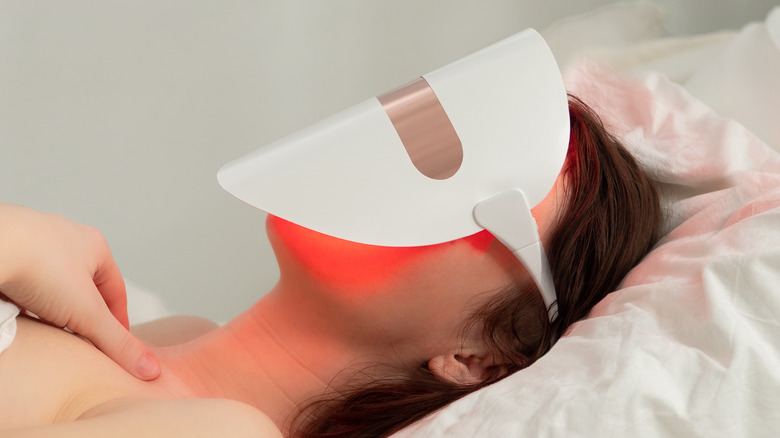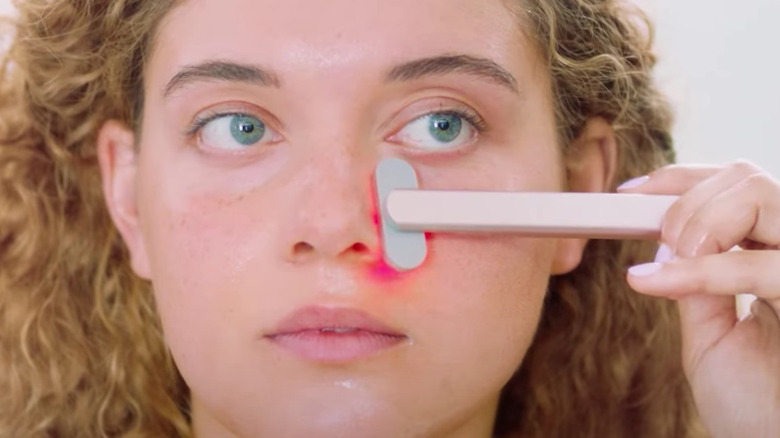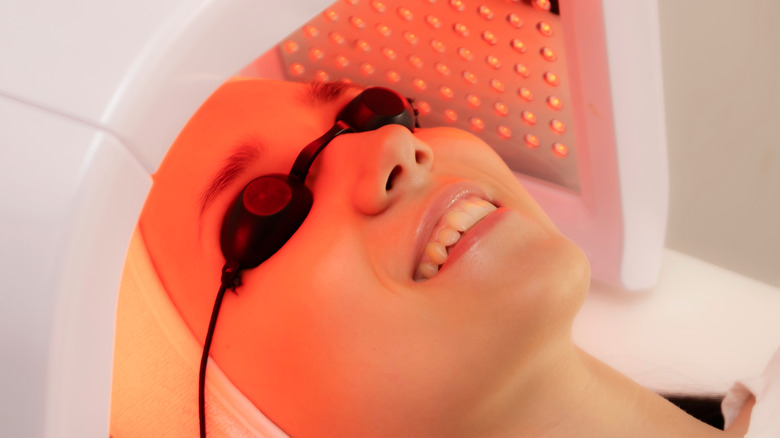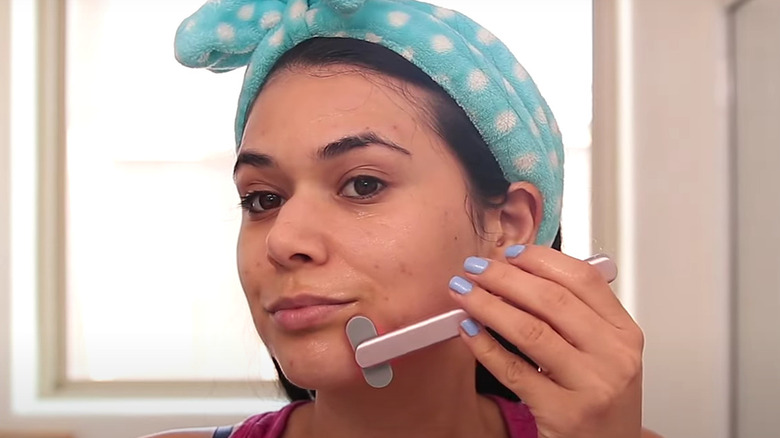Red Light Therapy May Not Be Worth The Hype After All
Various different light therapy treatments are available, including yellow light, blue light, near-infrared, and even red light. Each type of light has unique advantages, and the market is expected to reach a value of $1.5 billion by 2032, according to GMI. However, it's not only doctors and dermatologists who are well-informed of its benefits — consumers are beginning to catch on too.
At-home red light therapy has soared in popularity over recent years, with more and more at-home products popping up like a game of whack-a-mole. The treatment uses low levels of red light to stimulate the mitochondria in your skin cells to make more energy. In turn, this helps to improve the overall appearance of the skin, such as improvements in fine lines and blemishes — one of the main reasons that it's loved by so many. However, while the treatment clearly touts some attractive benefits, there are still some downsides to be aware of. Let's dive into them.
Your results largely depend on your consistency
At home, red light therapy typically comes as a facial mask or a wand-type of device. However, while it varies from person to person, at-home red light therapy may not always show visible results, especially if you have damaged skin. For your at-home red light therapy to be as effective as possible, you have to be consistent — and even then, results may only be temporary (via Self). You need to use the wand daily for the results to be visible.
Likewise, the visibility of your results will also boil down to the device you buy. Factors such as size, wavelength, and irradiance can all contribute toward the end results that you see and how effective a device will be (via PlatinumLED Therapy Lights). These factors mean that some devices on the market will be much more effective, while others may have a minimal effect on your skin, which you don't want. The less effective your device, the less visible your results will be. Speaking to Self, Elma Baron, M.D and professor of dermatology, explains that there "isn't a lot of research on the efficacy of specific models," so you should always make sure to do your due diligence when it comes to conducting your research on specific devices.
At home results won't match those from a medical office
Another downside of at-home red light therapy is that your results won't be as powerful as the results you'd expect from an in-office professional. This contrast boils down to the difference in devices used. If you go to a medical office for your treatment, the device will typically be "bigger and emit more energy," says Baron (via Self), which will ultimately help to achieve more dramatic results. In comparison, an at-home device will be much less intense, making the results less obvious.
If you were thinking of splashing the cash on an expensive device, then it may be worth casting an eye over the cost of professional red-light treatment from a board-certified dermatologist. This way, you can weigh up if you're going to get the best results for your money. However, even with professional treatment, red-light therapy alone may not be enough for you to achieve the glowing skin results that you want. But why?
You need to maintain a good skincare routine
While there are plenty of proven benefits of red light therapy, the treatment alone might not be enough for you to achieve the skin of your dreams. As well as using red light therapy, you should also be taking good care of your skin from the inside out in order to get the best results possible. Using light therapy alone should not be a replacement for a good skincare routine, explains cosmetic dermatologist Dr. Waldorf M.D., and at most, it's only likely going to enhance your current skin state (via The Cut). Think of it as adding another step into your daily skincare routine — it's a small piece in a big jigsaw puzzle.
In addition, while plenty of research has proven the spectacular benefits of red light therapy, there are still plenty of unknowns that remain. With this in mind, you should note that this is a risk you need to consider. More long-term research is needed to uncover any potential long-term effects of these devices. However, based on current research, short-term use is perfectly fine.



